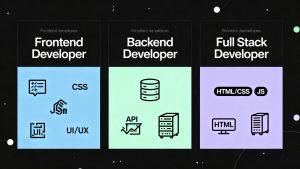The ClickHouse development team recently tackled the complexities of transitioning a large, security-sensitive C++ codebase to Rust. Through a methodical and incremental approach, the team shared valuable lessons for engineering organizations charting a path toward greater reliability and safety in core infrastructure.
Why Move from C++ to Rust?
ClickHouse, an open-source analytics database with more than 1.5 million lines of C++ code, faced increasing difficulty maintaining secure and stable operations. While C++ retains widespread popularity and makes hiring easier, persistent risks like memory corruption, segmentation faults, and race conditions were driving the need for change. Teams reevaluating legacy codebases often ask: “If we were starting today, would we choose Rust?” ClickHouse’s leadership pondered this as they explored the real-world implications of such a migration.
The Incremental Migration Strategy
Rather than rewriting the entire database, ClickHouse’s engineers opted for an incremental transition. The process began by integrating Rust directly into the build system, starting with isolated modules and expanding their scope over time. Initial efforts focused on small, well-contained features—such as cryptographic hashing, improvements to the command-line interface, and alternative query engines—before expanding to larger library and format support.
Addressing Migration Challenges
Bringing Rust and C++ together revealed significant technical challenges. Ensuring reproducible builds was a top concern, requiring careful alignment of security practices across both languages. Writing C++ wrappers for Rust code also introduced complexity, especially around memory allocation and error handling.
The team found that Rust’s safety guarantees provided advantages but also introduced different error behaviors. Rust libraries, unlike their C++ counterparts, were prone to excessive “panics,” which could abruptly terminate live server applications if not properly addressed. Managing cross-language dependencies, integrating with complex CI/CD pipelines, and balancing the nuances of each language’s ecosystem required considerable effort.
Value and Risks of Integrating Ecosystems
The migration resulted in a dramatic increase in managed dependencies. While the original C++ codebase included just over 150 dependencies, the new Rust components brought in hundreds more. Yet this expansion also accelerated development by unlocking access to modern data standards and libraries available only in Rust. Using official Rust libraries—rather than developing new ones in C++—directly improved developer productivity and maintained alignment with industry best practices.
Lessons Learned and Practical Recommendations
Despite the numerous challenges, ClickHouse’s experiment with Rust integration strengthened the platform’s reliability and inspired confidence in future development. However, the team decided not to rewrite the entire codebase, instead encouraging the community to contribute modules and add-ons in Rust.
- Incremental migration minimizes risk and maximizes learning for large, production-critical systems.
- Attention to reproducible and secure build processes is essential when blending ecosystems.
- Deep integration between C++ and Rust can surface subtle memory, error handling, and build management challenges; robust CI pipelines are critical for maintaining quality.
- Monitoring dependency growth is important for maintainability, but can be outweighed by productivity gains from modern language libraries.
The Road Ahead
ClickHouse continues to maintain its core in C++ while welcoming external contributions written in Rust. The team’s experience cautions against wholesale rewrites, recommending an agile, risk-managed approach with a focus on modular adoption and continuous evaluation.
Read more such articles from our Newsletter here.



